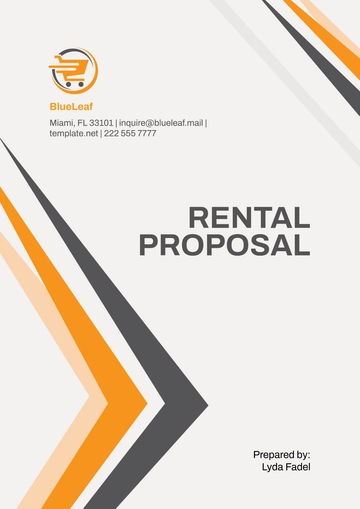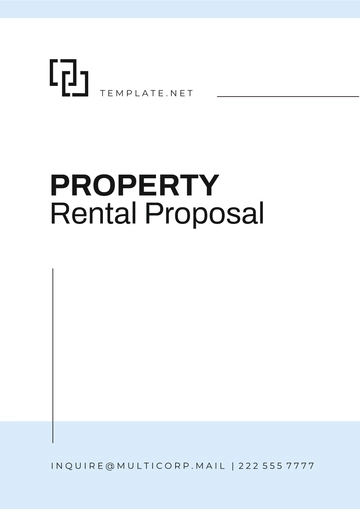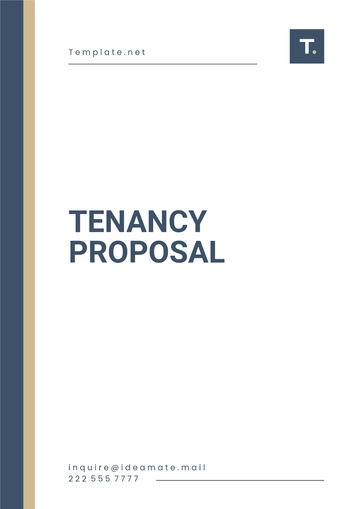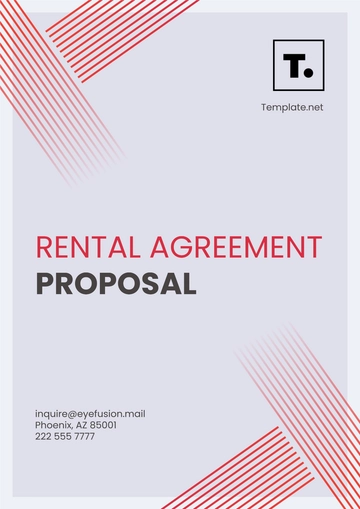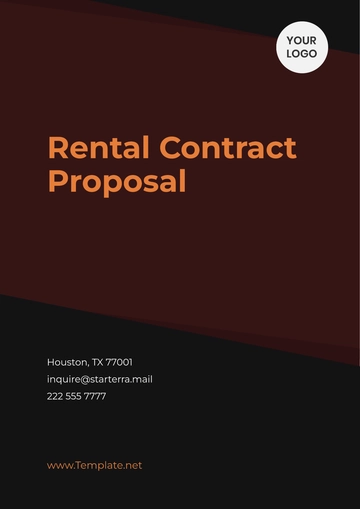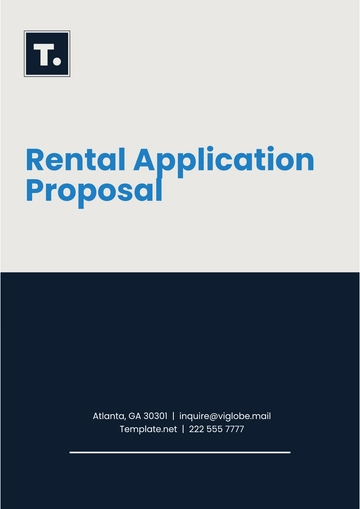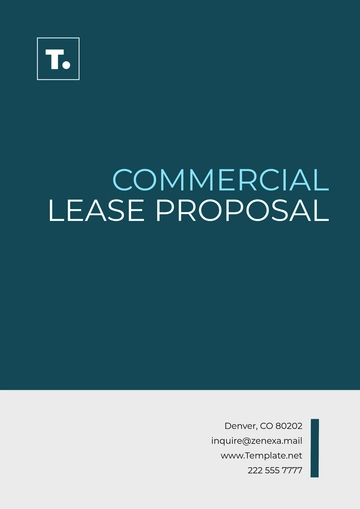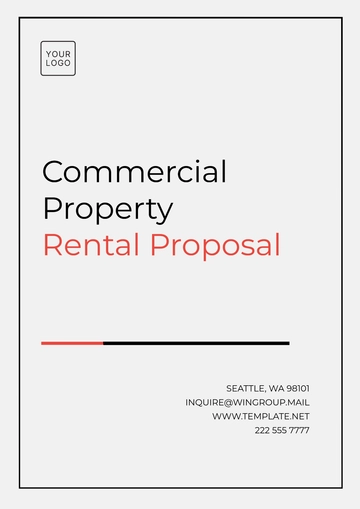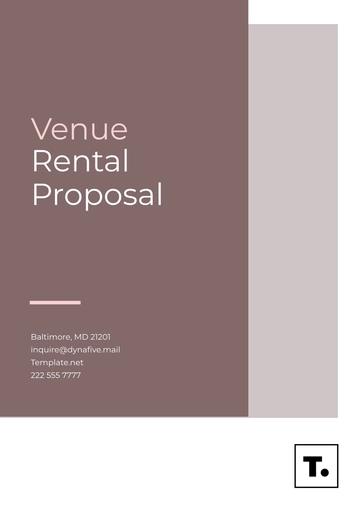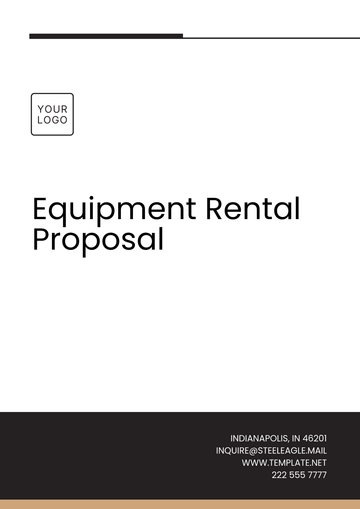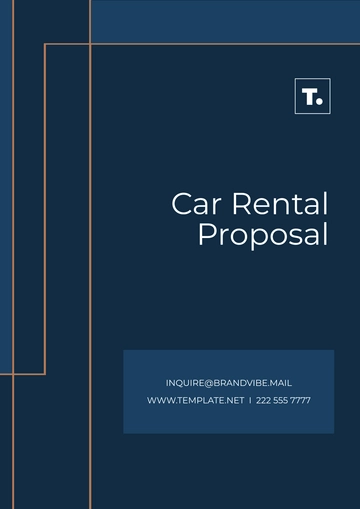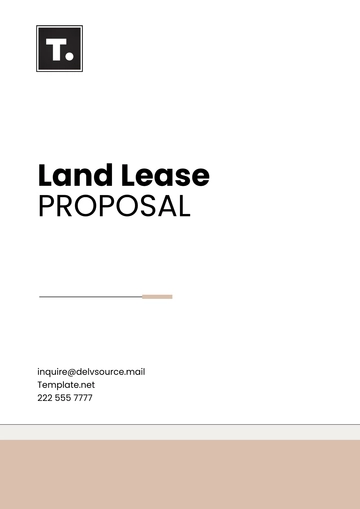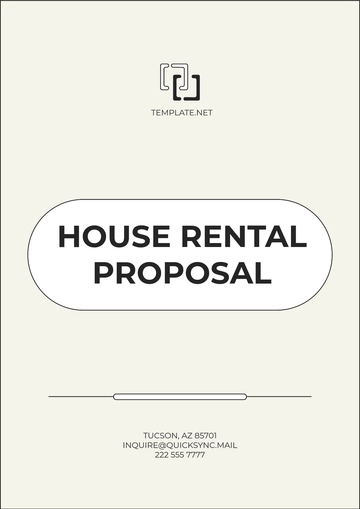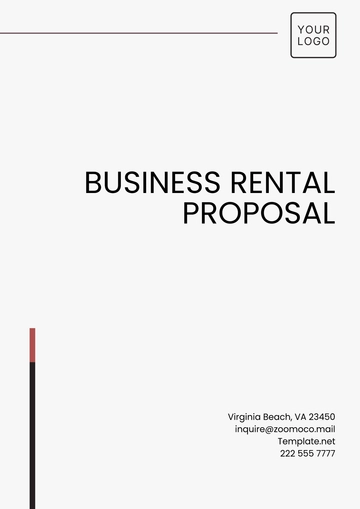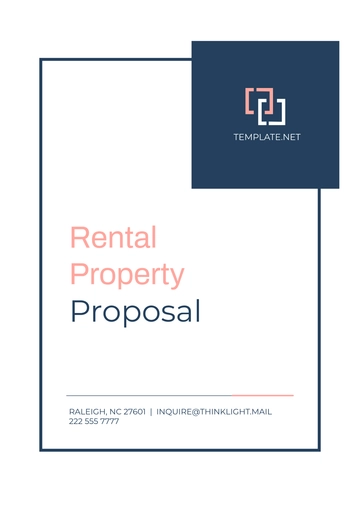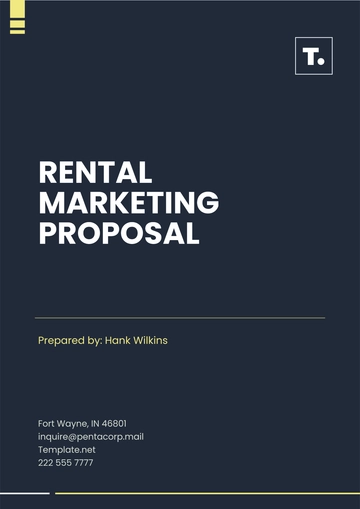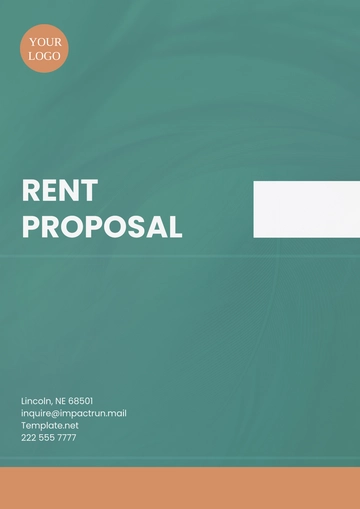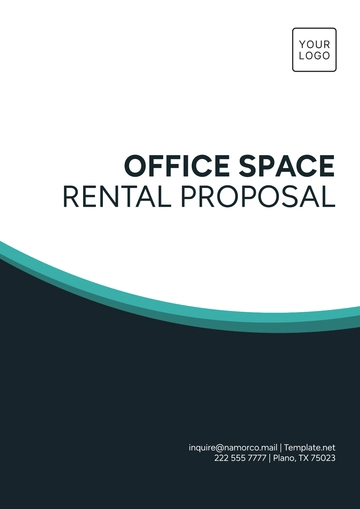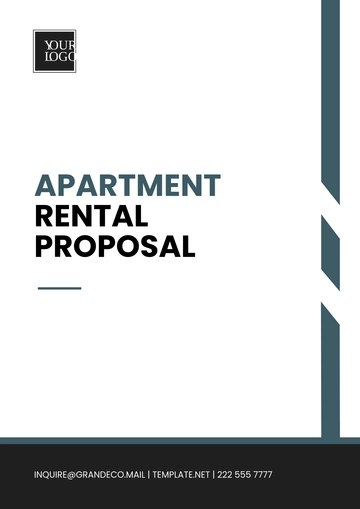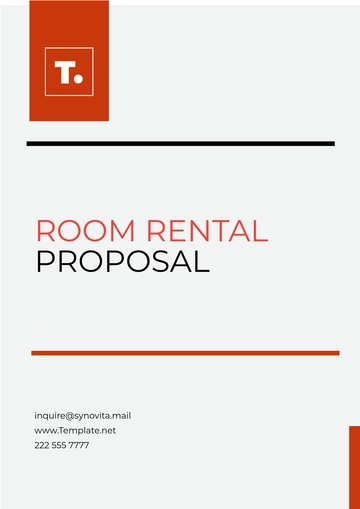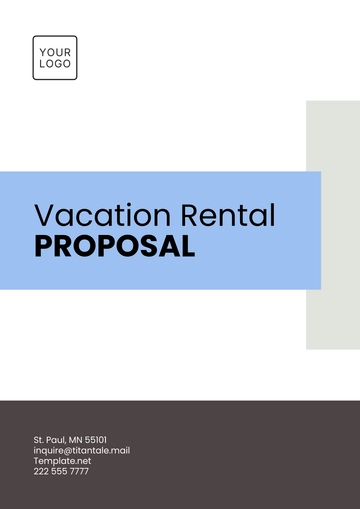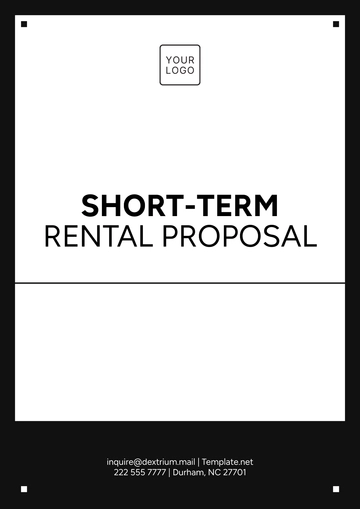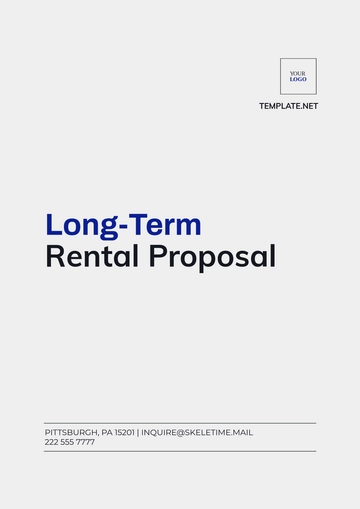Free Car Rental Budget Proposal
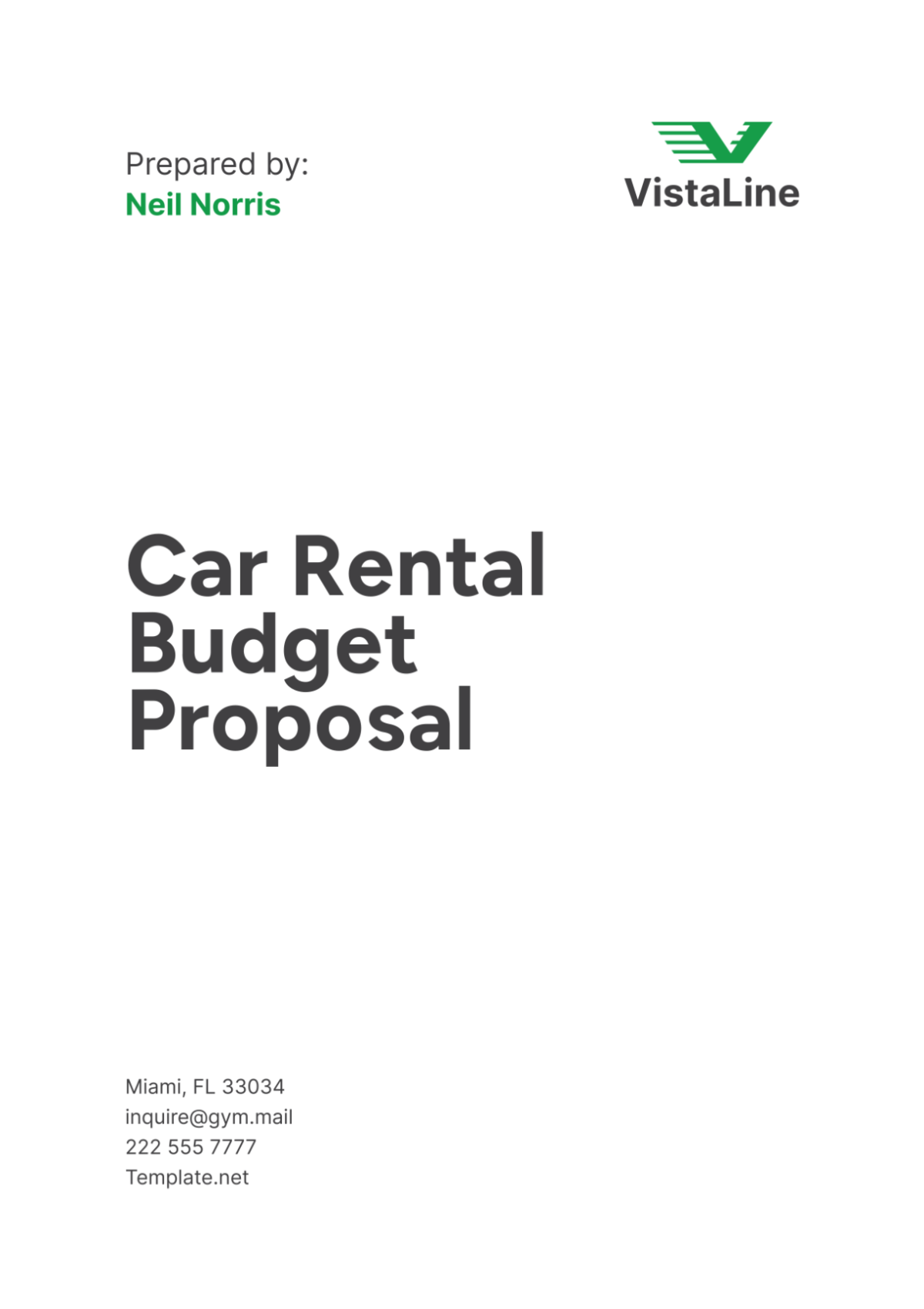
I. Executive Summary
A. Introduction
[Your Company Name] is a leading car rental service provider, dedicated to offering a wide range of vehicles to meet diverse customer needs. Our services are designed to provide convenience, flexibility, and value for money, ensuring a seamless rental experience for all clients. This budget proposal outlines our financial plan for the upcoming fiscal year, detailing our revenue projections, expense management strategies, and overall financial goals.
B. Objectives
The primary objective of this budget proposal is to establish a comprehensive financial plan that supports [Your Company Name]'s growth and operational efficiency. By setting clear revenue targets and managing expenses effectively, we aim to achieve sustainable profitability and enhance our market position. Additionally, this proposal seeks to allocate resources strategically to support fleet expansion, technological advancements, and market expansion initiatives.
II. Business Overview
A. Company Background
Founded in [Year], [Your Company Name] has grown to become a trusted name in the car rental industry. We offer a diverse fleet of vehicles, ranging from economy cars to luxury SUVs, catering to both individual and corporate clients. Our commitment to customer satisfaction and operational excellence has earned us a loyal customer base and a strong reputation in the market.
B. Market Analysis
The car rental market is characterized by dynamic trends and evolving consumer preferences. Recent market analysis indicates a growing demand for flexible rental options, including short-term and long-term rentals. The target audience for [Your Company Name] includes business travelers, tourists, and local residents seeking reliable transportation solutions. Competitive analysis reveals that while the market is highly competitive, there are significant opportunities for growth through differentiated services and strategic partnerships.
III. Financial Goals
A. Revenue Targets
For the upcoming fiscal year, [Your Company Name] aims to achieve a monthly revenue target of $500,000 and an annual revenue goal of $6 million. These targets are based on historical performance data and market growth projections. Revenue sources include rental fees, ancillary services such as insurance and GPS rentals, and corporate partnerships.
B. Expense Management
Effective expense management is crucial to maintaining profitability. Our goal is to reduce operational costs by 10% without compromising service quality. This will be achieved through cost-saving measures such as negotiating better rates with suppliers, optimizing fleet maintenance schedules, and implementing energy-efficient practices.
IV. Budget Components
A. Revenue Projections
Revenue projections for [Your Company Name] are based on a detailed analysis of market trends and historical data. The following table outlines the expected monthly and annual income from various revenue streams:
Revenue Source | Monthly Income | Annual Income |
|---|---|---|
Rental Fees | $400,000 | $4,800,000 |
Ancillary Services | $50,000 | $600,000 |
Corporate Partnerships | $50,000 | $600,000 |
Total Revenue | $500,000 | $6,000,000 |
B. Operating Expenses
Operating expenses include vehicle acquisition and maintenance, employee salaries and benefits, marketing and advertising, and administrative costs. The following table provides a detailed breakdown of these expenses:
Expense Category | Monthly Expense | Annual Expense |
|---|---|---|
Vehicle Acquisition | $100,000 | $1,200,000 |
Maintenance | $50,000 | $600,000 |
Salaries and Benefits | $150,000 | $1,800,000 |
Marketing and Advertising | $30,000 | $360,000 |
Administrative Costs | $20,000 | $240,000 |
Total Operating Expenses | $350,000 | $4,200,000 |
C. Capital Expenditures
Capital expenditures are planned for fleet expansion, technology investments, and facility upgrades. The following table outlines these expenditures:
Capital Expenditure | Monthly Cost | Annual Cost |
|---|---|---|
Fleet Expansion | $60,000 | $720,000 |
Technology Investments | $30,000 | $360,000 |
Facility Upgrades | $20,000 | $240,000 |
Total Capital Expenditures | $110,000 | $1,320,000 |
D. Contingency Funds
Contingency funds are allocated to manage unforeseen expenses and risks. A monthly allocation of $10,000 is set aside, amounting to $120,000 annually.
V. Budget Breakdown
A. Monthly Budget
The monthly budget combines revenue and expense projections to ensure financial stability. The table below summarizes the monthly income and expenses:
Budget Component | Amount |
|---|---|
Total Revenue | $500,000 |
Total Operating Expenses | $350,000 |
Capital Expenditures | $110,000 |
Contingency Funds | $10,000 |
Net Monthly Income | $30,000 |
B. Annual Budget
The annual budget provides a comprehensive financial overview, accounting for seasonal variations in revenue and expenses:
Budget Component | Amount |
|---|---|
Total Revenue | $6,000,000 |
Total Operating Expenses | $4,200,000 |
Capital Expenditures | $1,320,000 |
Contingency Funds | $120,000 |
Net Annual Income | $360,000 |
VI. Financial Analysis
A. Break-Even Analysis
The break-even analysis determines the point at which [Your Company Name]'s total revenue equals total expenses, resulting in no net loss or gain. This analysis indicates that [Your Company Name] must generate $500,000 in revenue to cover all fixed and variable costs.
B. Profit and Loss Statement
The projected profit and loss statement provides an overview of expected financial performance:
Item | Monthly Amount | Annual Amount |
|---|---|---|
Total Revenue | $500,000 | $6,000,000 |
Total Expenses | $470,000 | $5,640,000 |
Net Profit | $30,000 | $360,000 |
C. Cash Flow Statement
The cash flow statement tracks the inflow and outflow of cash, ensuring that [Your Company Name] maintains sufficient liquidity:
Cash Flow Component | Monthly Amount | Annual Amount |
|---|---|---|
Cash Inflows | $500,000 | $6,000,000 |
Cash Outflows | $470,000 | $5,640,000 |
Net Cash Flow | $30,000 | $360,000 |
VII. Risk Assessment
A. Market Risks
Market risks encompass a variety of potential challenges, such as economic downturns, increased competition, and fluctuations in consumer preferences. To address and reduce the impact of these risks, [Your Company Name] intends to implement a series of proactive measures. Firstly, the company will engage in regular and thorough market analysis to stay abreast of industry trends and shifts in the economic landscape. This ongoing assessment will enable informed decision-making and timely adjustments.
Additionally, the company will refine and adapt its pricing strategies to remain competitive and attractive to customers, ensuring that the business remains viable even in a fluctuating market. Finally, by diversifying its service offerings, [Your Company Name] aims to broaden its appeal and reduce dependency on any single market segment, thereby enhancing overall stability and resilience in the face of changing market conditions.
B. Operational Risks
Operational risks encompass a variety of potentially disruptive events, including vehicle breakdowns, interruptions in the supply chain, and shortages of staff. To effectively mitigate these risks, it is essential to adopt comprehensive strategies. This involves instituting rigorous and consistent maintenance schedules to ensure that all vehicles are kept in optimal working condition, thereby reducing the likelihood of breakdowns.
Additionally, establishing relationships with backup suppliers can provide a valuable safeguard against supply chain disruptions, ensuring that operations can continue smoothly even if the primary suppliers encounter issues. Furthermore, cross-training employees so that they can perform multiple roles within the organization will help address and prevent staff shortages, allowing for greater flexibility and resilience in the workforce.
C. Financial Risks
Financial risks embody a range of challenges, primarily including credit risks and fluctuations in interest rates. To effectively manage and mitigate these financial risks, [Your Company Name] is committed to implementing and adhering to a robust credit policy. This credit policy will be designed to ensure that credit is extended only to reliable and creditworthy parties, thereby minimizing the possibility of defaults and other credit-related adversities.
Additionally, [Your Company Name] will continuously monitor and keep track of changing interest rates in the financial markets. Through vigilant observation and analysis, the company will stay informed about interest rate trends and potential fluctuations. By staying abreast of these changes, [Your Company Name] can make informed decisions to secure loan terms that are favorable and advantageous for the company's financial health. These combined efforts will help [Your Company Name] navigate and manage the inherent financial risks with greater efficacy and stability.
VIII. Budget Justification
A. Revenue Growth Potential
[Your Company Name] is positioned to capitalize on market demand and growth opportunities. Market analysis indicates a robust demand for rental services, supported by increased travel and tourism. Expanding the fleet and entering new geographic markets will drive revenue growth.
B. Cost Efficiency
The ability to effectively manage costs is of paramount importance for ensuring that a business remains profitable over time. In order to maintain this crucial balance between revenue and expenses, the proposed budget has been designed to incorporate a variety of measures aimed at optimizing expenses. These measures have been carefully crafted to ensure that service quality remains uncompromised, thus upholding the standards expected by clients and stakeholders.
Additionally, strategic investments in both technology and operational efficiency are anticipated to produce significant cost savings in the long run. By focusing on these areas, the organization aims to enhance productivity and reduce unnecessary expenditures, which will contribute to sustained financial health and a competitive edge in the market.
IX. Monitoring and Control
A. Budget Tracking
Comprehensive and consistent oversight of our financial performance plays a vital role in successfully fulfilling our budgetary objectives. At [Your Company Name], we are committed to employing state-of-the-art financial tracking tools to meticulously monitor all income and expenses. By leveraging these sophisticated tools, we can ensure that every aspect of our financial activity aligns with our established budget, thereby facilitating closer adherence to our fiscal goals.
B. Variance Analysis
It is crucial to recognize and manage differences between the planned budget and actual financial performance in order to ensure the ongoing stability of an organization's finances. By conducting a thorough analysis of these variances on a monthly basis, it becomes possible to accurately identify any discrepancies. This regular assessment allows the organization to implement corrective measures without delay, thereby maintaining financial health and preventing any potential issues from escalating.
C. Reporting
Comprehensive and detailed financial reports will be generated on a regular basis to provide stakeholders with thorough and insightful information regarding the financial performance of the organization. The practice of transparent reporting plays a crucial role in fostering accountability among all parties involved, as it ensures that accurate and clear financial information is readily available. This transparency supports stakeholders in making informed and strategic decisions that can guide the organization toward achieving its objectives and sustaining its financial health.
X. Conclusion
A. Summary of Key Points
This budget proposal outlines a comprehensive financial plan for [Your Company Name], detailing revenue projections, expense management strategies, and financial goals. By adhering to this budget, we aim to achieve sustainable growth and profitability.
B. Call to Action
The next steps involve reviewing and approving the budget proposal, followed by implementing the outlined strategies. With a committed approach to financial management, [Your Company Name] will continue to thrive and expand in the competitive car rental market.
- 100% Customizable, free editor
- Access 1 Million+ Templates, photo’s & graphics
- Download or share as a template
- Click and replace photos, graphics, text, backgrounds
- Resize, crop, AI write & more
- Access advanced editor
Create a detailed budget proposal with Template.net's customizable and editable Car Rental Budget Proposal Template. Utilize the AI Editor Tool to present your budget needs and plans. This user-friendly template ensures clear and professional budget proposals, enhancing financial planning and approval processes.
You may also like
- Business Proposal
- Research Proposal
- Proposal Request
- Project Proposal
- Grant Proposal
- Photography Proposal
- Job Proposal
- Budget Proposal
- Marketing Proposal
- Branding Proposal
- Advertising Proposal
- Sales Proposal
- Startup Proposal
- Event Proposal
- Creative Proposal
- Restaurant Proposal
- Blank Proposal
- One Page Proposal
- Proposal Report
- IT Proposal
- Non Profit Proposal
- Training Proposal
- Construction Proposal
- School Proposal
- Cleaning Proposal
- Contract Proposal
- HR Proposal
- Travel Agency Proposal
- Small Business Proposal
- Investment Proposal
- Bid Proposal
- Retail Business Proposal
- Sponsorship Proposal
- Academic Proposal
- Partnership Proposal
- Work Proposal
- Agency Proposal
- University Proposal
- Accounting Proposal
- Real Estate Proposal
- Hotel Proposal
- Product Proposal
- Advertising Agency Proposal
- Development Proposal
- Loan Proposal
- Website Proposal
- Nursing Home Proposal
- Financial Proposal
- Salon Proposal
- Freelancer Proposal
- Funding Proposal
- Work from Home Proposal
- Company Proposal
- Consulting Proposal
- Educational Proposal
- Construction Bid Proposal
- Interior Design Proposal
- New Product Proposal
- Sports Proposal
- Corporate Proposal
- Food Proposal
- Property Proposal
- Maintenance Proposal
- Purchase Proposal
- Rental Proposal
- Recruitment Proposal
- Social Media Proposal
- Travel Proposal
- Trip Proposal
- Software Proposal
- Conference Proposal
- Graphic Design Proposal
- Law Firm Proposal
- Medical Proposal
- Music Proposal
- Pricing Proposal
- SEO Proposal
- Strategy Proposal
- Technical Proposal
- Coaching Proposal
- Ecommerce Proposal
- Fundraising Proposal
- Landscaping Proposal
- Charity Proposal
- Contractor Proposal
- Exhibition Proposal
- Art Proposal
- Mobile Proposal
- Equipment Proposal
- Student Proposal
- Engineering Proposal
- Business Proposal
